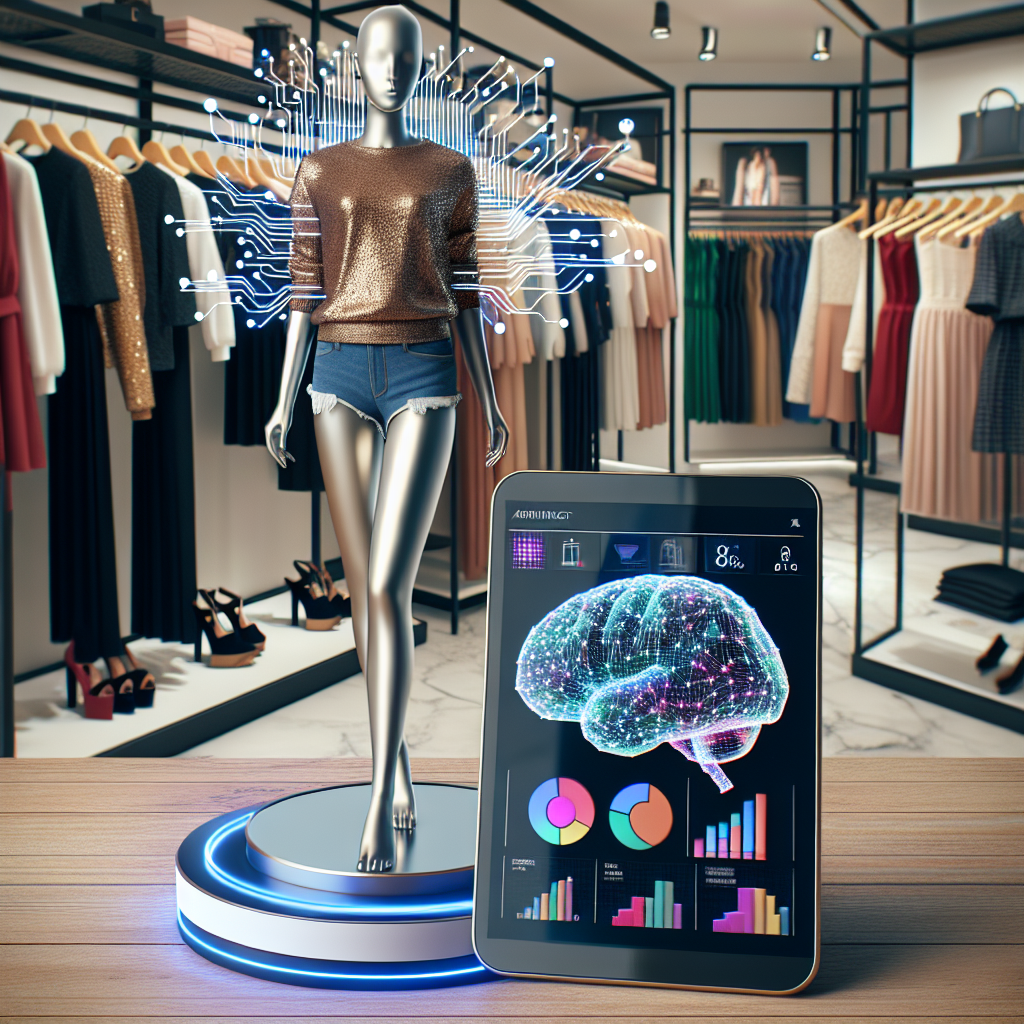Artificial Intelligence (AI) has been revolutionizing various industries, and fashion retail merchandising is no exception. The intersection of AI and fashion retail merchandising has brought about significant advancements in how products are selected and presented to consumers. From predicting trends to personalizing shopping experiences, AI is changing the way fashion retailers operate and engage with their customers.
One of the key ways in which AI is improving product selection in fashion retail merchandising is through trend forecasting. Traditionally, trend forecasting has relied on human intuition and analysis of historical data. However, AI can analyze vast amounts of data from social media, online searches, and sales figures to identify emerging trends more accurately and quickly. By leveraging AI-powered algorithms, retailers can stay ahead of the curve and offer customers the latest and most relevant products.
AI is also enhancing product selection by personalizing the shopping experience for individual customers. By analyzing shopper behavior and preferences, AI algorithms can recommend products that are tailored to each customer’s unique taste and style. This level of personalization not only improves the customer experience but also increases sales and customer loyalty. Retailers can also use AI to optimize their product assortment based on factors such as seasonality, pricing, and inventory levels, ensuring that they are offering the right products to the right customers at the right time.
Another way in which AI is impacting fashion retail merchandising is through visual search technology. Visual search allows customers to search for products using images rather than text, making it easier for them to find the exact items they are looking for. Retailers can use AI-powered visual search tools to enhance the shopping experience and drive conversion rates. By enabling customers to upload photos or screenshots of products they like, retailers can recommend similar items from their inventory, increasing the likelihood of a purchase.
AI is also improving product selection by optimizing pricing strategies. Retailers can use AI algorithms to analyze competitor pricing, consumer demand, and other market factors to determine the optimal pricing for their products. By dynamically adjusting prices in real-time, retailers can maximize revenue and profitability while remaining competitive in the market. AI-powered pricing tools can also help retailers identify pricing trends and opportunities for discounting or promotions, enabling them to make data-driven decisions that drive sales and improve margins.
In addition to improving product selection, AI is also enhancing the overall merchandising process for fashion retailers. AI-powered merchandising tools can help retailers analyze sales data, inventory levels, and customer feedback to make informed decisions about product assortments, promotions, and merchandising strategies. By automating routine tasks and providing actionable insights, AI enables retailers to optimize their merchandising efforts and drive business growth.
Overall, the intersection of AI and fashion retail merchandising is transforming the industry by improving product selection, personalizing the shopping experience, and optimizing merchandising strategies. By leveraging AI-powered technologies, retailers can stay competitive in a rapidly evolving market and meet the ever-changing demands of today’s consumers.
FAQs:
Q: How is AI used in trend forecasting in fashion retail merchandising?
A: AI algorithms analyze data from social media, online searches, and sales figures to identify emerging trends more accurately and quickly than traditional methods.
Q: How does AI personalize the shopping experience for customers in fashion retail?
A: AI analyzes shopper behavior and preferences to recommend products that are tailored to each customer’s unique taste and style, enhancing the shopping experience and increasing sales and customer loyalty.
Q: What is visual search technology and how is it used in fashion retail?
A: Visual search allows customers to search for products using images rather than text, making it easier for them to find the exact items they are looking for. Retailers can use AI-powered visual search tools to recommend similar items from their inventory based on customer-provided images.
Q: How does AI optimize pricing strategies for fashion retailers?
A: AI algorithms analyze competitor pricing, consumer demand, and other market factors to determine the optimal pricing for products. By dynamically adjusting prices in real-time, retailers can maximize revenue and profitability while remaining competitive in the market.

